 Garmin Edge 1040 Quick Accuracy & Performance Report
Garmin Edge 1040 Quick Accuracy & Performance Report
Over the years I have had fun bashing Garmin’s GPS accuracy – it was easy. It seems my years of fun have come to an end with Garmin’s latest generation of GPS (GNSS) tech.
Return to the Garmin Edge 1040 Review.
The Garmin Edge 1040 is Garmin’s flagship, large-format bike navigation computer which received the latest Airoha (Mediatek) GNSS (GPS) chip. I demonstrated that chip to be one of the most accurate ever used in sports watches. Has that same level of accuracy been received on the Edge 1040?
In addition to the GPS accuracy, I look briefly at Elevation accuracy and the accuracy of the battery life predictions.
Test Kit: I have the Edge 1040 non-solar model and have mostly used it on my Cervelo R5 road bike and old Specialized hardtail trail bike. I’ve also used it a couple of times on my P5 TT bike but the Edge is slightly too big to easily fit between my aero bars. In terms of sensors, I’ve paired the Edge to an HRM-PRO chest strap, Varia RTL510 radar light, Di2 and an R9100p power meter, these sensors might slightly affect the power draw when looking at the battery performance. Comparison devices include the Garmin Forerunner 955 and Wahoo Elemnt Bolt 2.
In a nutshell: Accuracy is not an issue for the Garmin Edge 1040. If you want to learn more about its other features, check the details in the Garmin Edge 1040 Review.
GNSS (GPS) Accuracy – What Are We Testing For?
We are testing for the absolute level of accuracy plus any delay in determining the position.
The accuracy of the GPS track is most evident on the post-workout maps. If you are a keen Strava KOM/QOM hunter then it might be essential to get those start and end points exactly correct otherwise my understanding is that Strava sometimes corrects your position.
When navigating it’s obviously essential to know exactly where you are at any given time. It’s no good knowing the exact position but reporting it 10metres too late after you should have taken a turn. As a result, Garmin seems to hedge their bets and warn you 30m in advance of a turn.
In my opinion, the GPS accuracy of bike computers is generally good. Typically getting a GPS fix on a road on a fast-moving bike is easier than from a runner’s swinging arm on the pavement (closer to buildings). That said, proximity to buildings and trees causes cycling computers the same kinds of problems.
Also, let’s not forget the inclinometer that tells you grade changes.
Surrey Hills including Box Hill
Both Garmin’s produced an excellent, almost faultless GPS track. They were better than the Bolt which was still good.
I could nitpick in a few places where there are 2-3m errors but there’s no point as these were the best tracks I’ve had on this route. There are a lot of tall, roadside trees but they caused no issues of note.
Richmond Park
Cancellara Corner in Richmond Park caused the biggest GPS problem where there’s probably a consistent 4m error in the same place on two laps.
Hardly anything to lose sleep over but an interesting error nevertheless as there are clear skies at that point.
South Downs to Haslemere Trails
The following examples are through some heavily forested areas in Southern England including parts of the South Downs Way.
I compare the 1040 (multi-band) to the 955 Solar (GPS-only) and to the Bolt 2. I had some trouble determining if the bike computers’ tracks were correct as the paths marked by Google were sometimes wrong due to the density of tree cover obscuring any view of the path. Tentatively it looks like the Edge 1040 is more accurate than the forest trails marked on Google’s images! and is certainly better than the tracks from Bolt 2 and 955 (GPS-only).
Full Route Link: dcranalyzer
The vast majority of this route yielded surprisingly good results. The exceptions were in the forests where the Bolt wasn’t as good as the 955 (GPS). I struggled to find any part of the 1040’s track to show you that isn’t good…even in the forests.
Old Sarum, Stonehenge & South Downs
Even the earth energies that emit from the UK’s mystical ley lines are insufficient to dent the accuracy of the Edge 1040’s GNSS tracks. This was an open sky trail ride on the whole and there was nothing to show you from the GPS testing over the entire route. All was good.
Elevation Accuracy
Elevation performance is excellent – with one caveat.
The raw elevation tracks are great. Even over the two long rides, I had no significant issues with the elevation. A minor glitch seemed to be with elevation changes when stationary at coffee stops but the Edge 1040 was significantly better than the Wahoo Bolt 2 in that scenario.
As a one-off exercise, I manually calibrate my Garmin devices to my home location with a known elevation. As a result, Garmin correctly & automatically calibrates elevation at the start of every future ride from the same place.
The only elevation-related problem is with the responsiveness of the grade metric on the Edge 1040; it’s way too laggy. As an example, I was forced to stop on an off-road grade that exceed 20% and at this point, the grade reset to 0% (zero) even though I was following a course. Pushing the bike up the remainder of the hill it became obvious that the live grade metric works from 3D-GPS changes and that several seconds or up to about 50m can be required to show the correct grade.
Battery
Battery charge consumption was consistently at 2.3% per hour across several 1-3 hour workouts giving an overall capacity of 43 hours at the maximum GPS accuracy setting. Garmin claims 35 hours. Garmin further claims double the battery life with GPS-only ! Wow.
I was extremely impressed with the battery performance when navigating on long rides. These are two full days when following a route with TBT and with significant sections of going off-route (requiring re-routing). On the second day, I had the map screen on show almost all of the time to try to deplete the battery – I failed!
Each day used battery-gobbling Multi-band GNSS and, as you can see, the Edge 1040’s battery happily handled big days on the trails.
If you follow routes and navigate a lot you will probably have always had worries about the battery lasting the day. If you crank the Edge 1040 down to use GPS-only it should easily navigate you for a whole weekend with no need to recharge. It’s very impressive.
Interestingly, this 3-hour test was definitely in GPS-only mode but the battery consumption is unchanged (slightly worse and not following a route).
Take Out
From my tests, the Garmin Edge 1040 appears accurate with all of its sensor measurements. Responsiveness to grade changes could be improved but that’s it.
Return to the Garmin Edge 1040 Review.
From a practical perspective, I will use GPS-only for all my road cycling as it gives the accuracy I need. I have some more trail rides planned through forests in a few weeks’ time and I will crank the accuracy up for those with multi-band.
 Garmin Edge 1040 Quick Accuracy & Performance Report
Garmin Edge 1040 Quick Accuracy & Performance Report
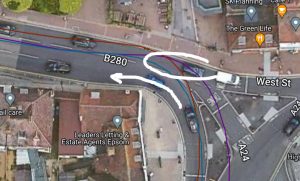




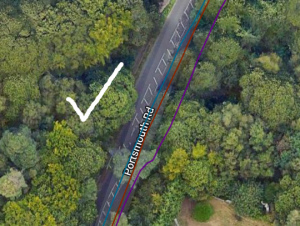





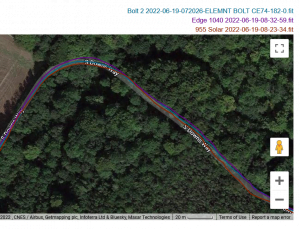




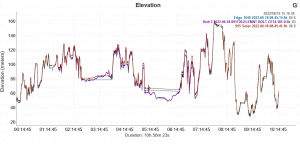
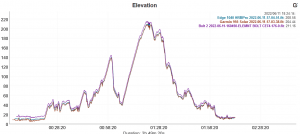




Edge 1040 seems to be the first Garmin Edge that gets elevation accurate for me, especially with weather changes or on big climbs. I think this is the first Edge that pulls in the continuous DEM calibration from the watches.
that might explain the good performance, thank you.
obviously DEM needs accurate GNSS but it has that. I assume there is some sensor fusion too with the barometer
For more accurate grades than what Garmin offers natively there’s a CIQ DF that uses the barometer and speedometer sensors, “sensible grade” I believe is it’s name.
here: https://apps.garmin.com/en-US/apps/dab102f5-7172-49e4-9b46-b726a760e2ac